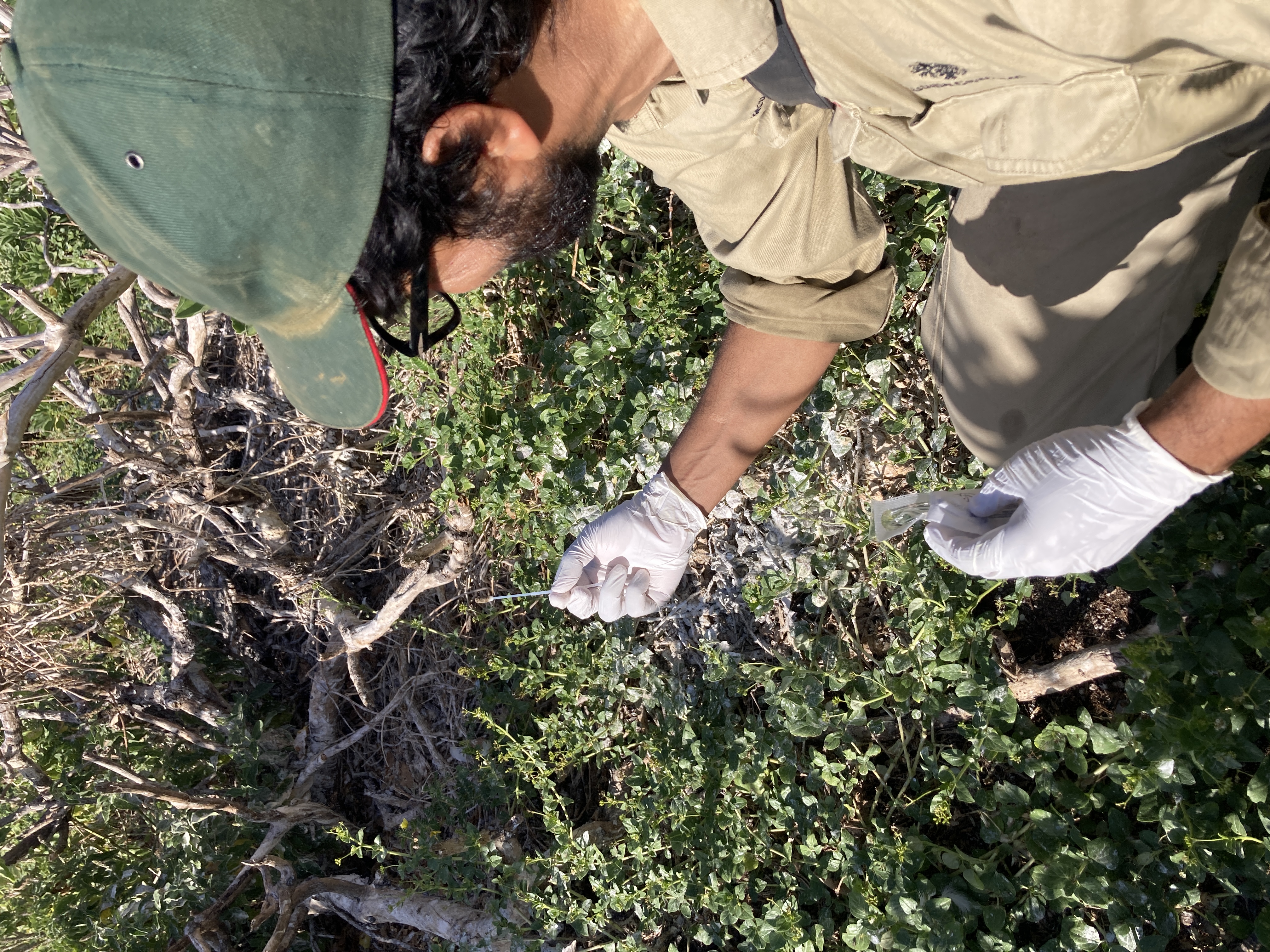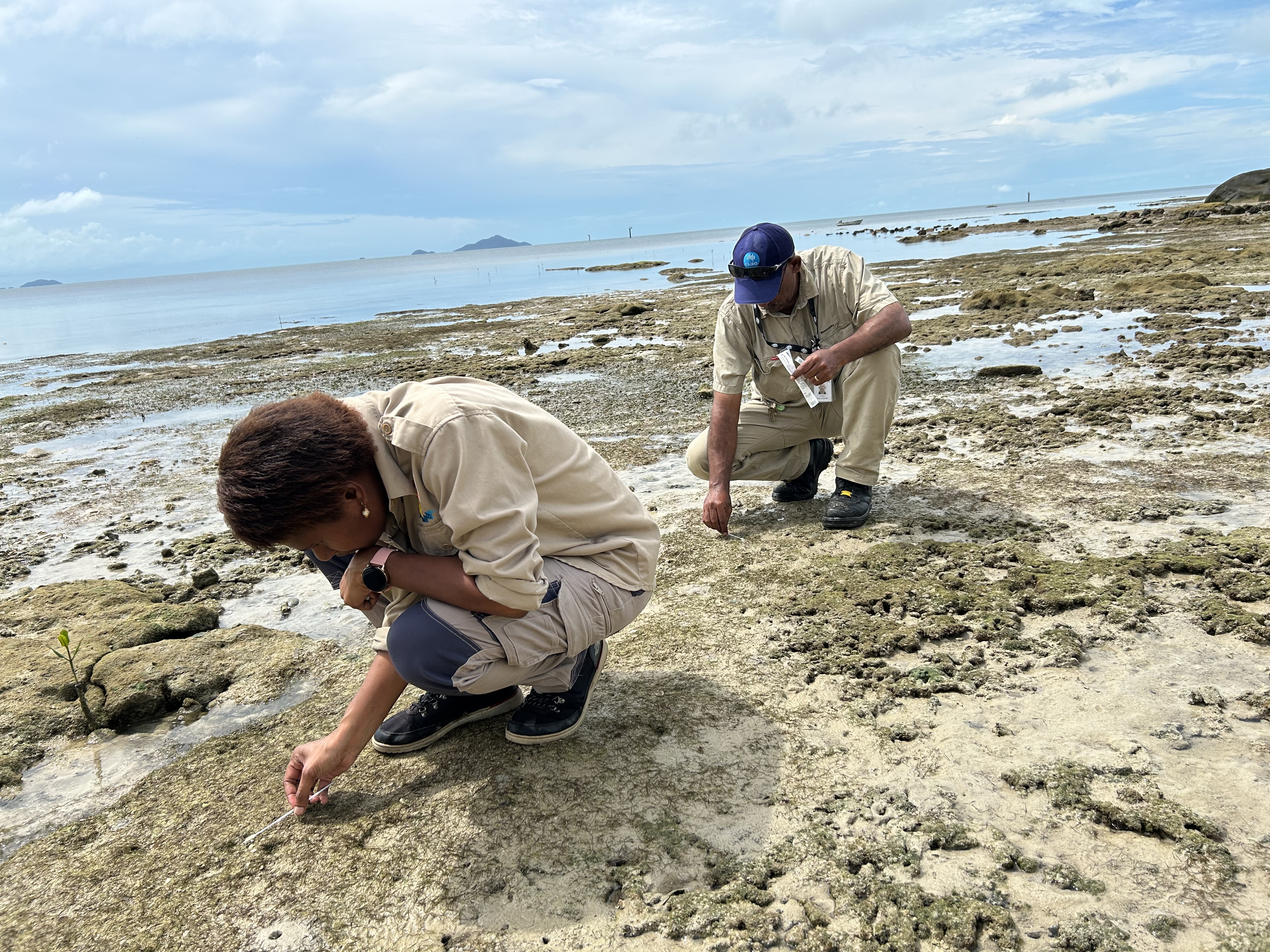From the desk of the Australian Chief Veterinary Officer: Partnering with First Nations communities for robust animal biosecurity
22 May 2025Veterinarians play a vital role in protecting the health of animals, people, and the environment. That role extends well beyond clinical work—it’s about collaboration, communication, and trust. Across Australia, the Department of Agriculture, Fisheries and Forestry (DAFF) works closely with First Nations communities to deliver biosecurity and animal health activities that help protect Australia’s unique biosecurity.
This work is not only critical to Australia’s biosecurity system—it also reflects a long-standing commitment to partnership, equity, and respect. True animal health resilience comes when local voices are heard, and knowledge is shared.
In addition to sharing my own insights, this article includes perspectives from several of my departmental veterinary colleagues and highlights the importance of partnering with First Nations peoples to strengthen national animal biosecurity.
Ground-Level Collaboration: The Indigenous Ranger Biosecurity Program
A key example of the effective partnership between DAFF and First Nations peoples, is the Indigenous Ranger Biosecurity Program (IRBP), which is part of the Northern Australia Quarantine Strategy (NAQS). This program engages Indigenous rangers across northern Australia to carry out biosecurity surveillance and raise awareness of biosecurity threats, in some of the country’s most remote and environmentally sensitive areas.
Indigenous rangers help protect Australia from exotic pests and diseases by:
- Conducting on-ground surveillance,
- Supporting animal surveys run by NAQS veterinarians,
- Reporting unusual animal health events, and
- Sharing biosecurity knowledge within their communities.
These rangers are often Traditional Owners with deep, intergenerational ties to Country. Their unique understanding of local environments makes them ideally placed to identify early warning signs of change.
More than just a service delivery model, the IRBP supports skill-building, local employment, and self-determination. Rangers receive training, equipment, and ongoing support, enabling them to lead biosecurity efforts in ways that are culturally relevant and aligned with their community’s priorities.
Supporting Surveillance Through NAQS Animal Health Surveys
Animal health surveillance is central to Australia’s biosecurity. Each state and territory government are responsible for animal health surveillance within their own borders. However, in recognition of the unique biosecurity risks facing our northern border, NAQS undertakes animal biosecurity activities that complement the activities led by state and territory government.
NAQS Veterinary Officers regularly conduct animal health surveys across northern Queensland, the Northern Territory, and Western Australia—often in direct partnership with Indigenous landholders, rangers, and community members. These surveys monitor for exotic animal diseases in both livestock and wildlife, particularly those that could enter Australia from near countries such as Papua New Guinea (PNG).
Dr Guy Weerasinghe, a Senior Veterinary Officer in NAQS noted ‘Indigenous rangers have an intimate awareness of their Country and are therefore, the most likely to identify changes that may indicate the incursion of exotic pest or disease.’
The importance of collaborative engagement of First Nations communities has been crystalised amidst the current threat of high pathogenicity avian influenza (HPAI). Australia remains the only continent free from H5N1 HPAI (clade 2.3.4.4b).
With growing concerns about the global distribution of this virus (including in Antarctica), NAQS called upon Indigenous rangers to grow the targeted surveillance for HPAI in northern Australia through the National Avian Influenza Wild Bird Surveillance Program. Indigenous rangers responded positively to the request and now undertake environmental faecal sample collection with NAQS. For these communities, the potential impacts of HPAI extend beyond economic and environmental implications; Indigenous rangers have noted the cultural and food security significance of many bird species on their Country, and therefore the importance of protecting them.
According to Dr Weerasinghe, ‘over the last year and a half, we've seen an increase of sampling efforts across northern Australia.’ These efforts work to ensure Australia’s animal biosecurity remain robust.
Importantly, this work has been undertaken with communities, not to them. Trust, cultural awareness, and long-term engagement underpin every activity.
Photo: Dr Guy Weerasinghe, NAQS Senior Veterinary Officer, undertaking environmental faecal sampling for avian influenza surveillance (Photo credit: Dr Guy Weerasinghe)
Partnership in the Torres Strait and Papua New Guinea
The Torres Strait is one of Australia’s most strategically important biosecurity regions due to its proximity to PNG and the regular movement of people and animals via the Torres Strait Treaty.
NAQS works closely with Torres Strait Islander communities to monitor animal health, enhance preparedness and response capabilities, and deliver education to communities. The partnership extends over the border into PNG. Recently, the Offshore team within my office was able to facilitate an animal health officer from PNG’s National Agriculture and Quarantine Inspection Authority (NAQIA) to participate in an NAQS-led animal health survey through the Torres Strait.
Photo: Environmental faecal sampling being conducted by Dorothy Pagru, NAQIA Animal Health Officer and Lama Trinkoon, NAQS Biosecurity Officer in the Torres Strait (Photo credit: Dr Tom Couston).
Dr Tom Couston, a Veterinary Officer in my office says, ‘the collaboration between PNG and the Torres Strait on animal health exemplifies our shared commitment to biosecurity, sustainable livelihoods, and the protection of animal and human health across our shared borders. Together, we are strengthening surveillance systems, sharing critical knowledge, and working towards a healthier future for both countries.’
This work is culturally informed and involves community leaders. Veterinary officers partner with Traditional Owners, local councils, and community leaders to co-design animal health activities that reflect both scientific best practices and traditional knowledge.
By blending local insight with technical expertise, these efforts help protect the unique biodiversity of the Torres Strait islands and contribute to national biosecurity goals.
Engaging First Nations Representatives in Animal Health Projects
Beyond core programs like NAQS and the IRBP, DAFF funds a range of initiatives to further enhance First Nations engagement on animal health matters across northern Australia.
Research previously undertaken by DAFF identified opportunities to enhance biosecurity capacity through stronger First Nations involvement in disease preparedness and response activities. In response, my office is currently leading two projects to explore:
- The cultural and economic value of feral animals to First Nations communities in northern Australia, and
- How to support culturally appropriate engagement of First Nations representatives during emergency animal disease (EAD) responses.
Both projects are progressing well, with initial findings expected in the near future.
I am committed to ensuring the findings and recommendations of these projects inform future policy and ensure First Nations perspectives are embedded in emergency planning and response.
Looking Ahead
As Australia continues to face complex and evolving biosecurity risks—driven by climate change, global trade, and emerging diseases—our animal health systems must be inclusive, responsive, and grounded in community.
Programs like the IRBP and surveillance activities undertaken in the Torres Strait highlight what’s possible when First Nations leadership is valued, supported, and integrated into national systems. These partnerships strengthen early detection, promote resilience, and deliver better outcomes for all Australians. Looking ahead, the department is committed to:
- Deepening partnerships with First Nations communities,
- Supporting local capacity-building, and
- Embedding First Nations voices in the design and delivery of animal biosecurity programs.
By working together, we can ensure that Australia's animal health system is not only scientifically robust, but also culturally informed, and ready for the challenges of the future.
For updates on the work of the Office of the Chief Veterinary Officer, follow the Australian Chief Veterinary Officer on Twitter/X and LinkedIn.


